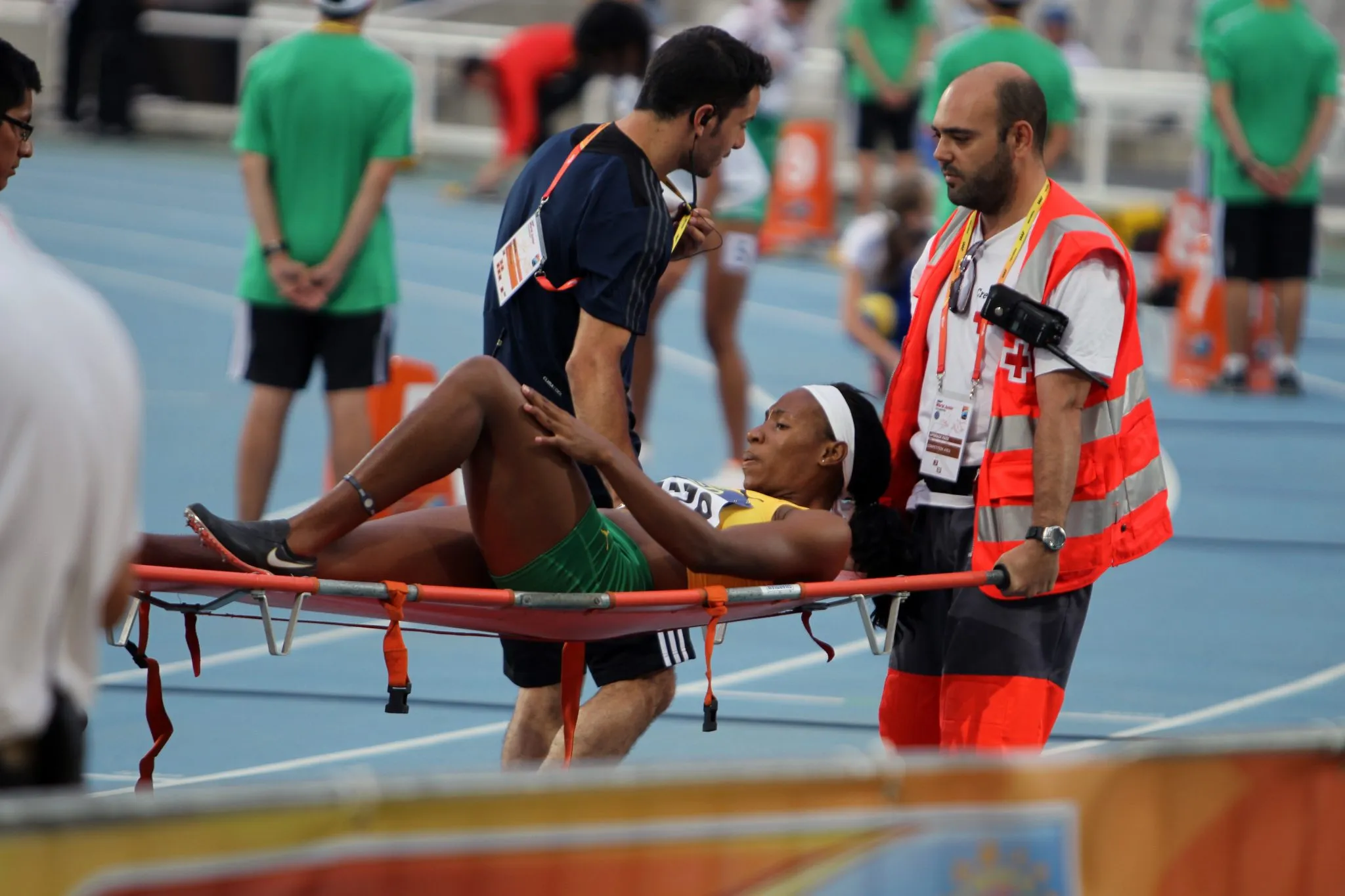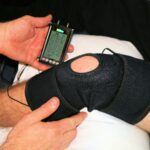 It is silent and dark for a moment. You are not sure what just happened. Then a shooting pain is coming out of know where. Now your body is getting hot, and your heart is pounding. Usually, you can handle pain but definitely not in this moment. It hurts to just breath or even make the slightest movement. What just happened?
It is silent and dark for a moment. You are not sure what just happened. Then a shooting pain is coming out of know where. Now your body is getting hot, and your heart is pounding. Usually, you can handle pain but definitely not in this moment. It hurts to just breath or even make the slightest movement. What just happened?
Name any great athlete that has not been injured at one time or another during their athletic career. I will give you a moment to think. Trust me my brain was fried trying to think about all those athletes. However, let me help by naming some.
Lionel Messi? If you get a chance to follow him, he has had 17 injuries since 2006 with the most recent one on March 13, 2024 (Bonn, 2024). How about when Derek Jeter when he was playing for the Yankee’s, did he ever have to sit out? Turns out, he experienced several injuries over the years. In 2013, only played 17 games in that season, otherwise he was on the disabled list due to an injury from 2012 in the first game of the season against the Detroit Tigers (Matthews, 2013). How about LeBron James or Serena Williams? You guessed right if you said “yes” to having at least one injury. Lebron has had injuries every year consecutively from 2017 to date according Fox Sports, 2024. As for Serena Williams though she as had multiple injuries throughout her athletic career, she suffered a leg injury in 2021 due to the slick grass court at Wimbledon (Camenker, 2022).
Should I name more? Literally, I can go on. The point is. It is highly likely for any athlete, even elite athletes to experience some type of injury during their athletic career. Injuries can occur at any time, while at practice or during the game. Injuries can even take place off the field such as during leisure time or on holiday. It can happen anywhere.
Latest report from the Data from the U.S. Department of Health and Human Services reports an estimated 8.6 million sports injuries occur each year (Sheu, Li-Hi, and Hedegaard, 2016). So, themessage here continues that there is a great likelihood that an athlete will get injured at least once in their professional or non-professional career. Now what do we do with this information? And how can athletes be productive and even become a stronger performer after experiencing an injury?
Mental Toughness
Have you heard this common phrase: ‘Get your head in the game.’? Athletes are trained and prepared for mental toughness on the field by coaches and supporting staff. But what about off the field? Preparation for mental toughness is lacking when it comes to recovering from an injury. Especially, how athletes can be productive while off the field when on pause and recuperating from the injury.
Here’s the Plan
Usually, a medical doctor will give a range of expectations of full recovery whether 6 weeks, 6 months, or never. An individual’s experience of recovery from an injury is unknown especially if never preparing for it. However, having a plan can take away the mystery or fear of falling behind in one’s status or goals. Here I have several helpful steps to consider when planning for a successful recovery. I would not even consider them to be steps but rather parts to factor in.
Part One: Identify the Physical Therapy
When I say physical therapy, I do not mean literally only working with a physical therapist. I am referring to working with professionals regarding an athlete’s physical healing. Experts for rehabilitation in addition to a physical therapist would be primary care doctors, orthopedic surgeons, and sports nutritionist.
Bed Rest
It is important to listen to the doctor’s orders of how long to have bed rest. But if they say next day after surgery to start moving then do so with guidance from a professional. Not allowing your body to rest can cause further damage to the injured area as well as too much rest can also create scaring or atrophy.
Rehabilitation/exercise
Learning how to use the healing body is an important way to transition back to elite status with guidance. Again, more damage can be done if not using the body properly. Other concerns might be not pushing yourself enough due to fear of further injury or worries that things will never be the same. As well as not following directions as prescribed can lead to prolonged recovery time. It is important to follow up with the medical team.
Nutrition

Nutrition has always been important in sports to help with strength conditioning, workout recovery, and maintain health for Athletes. It is equally important to work with a nutritionist when recovering from an injury. Speaking with Jackie Kaminski (Personal Communication, April 1, 2024), notes that not all injuries are the same though all would benefit from including Aminos/Protein and Omega 3. She added that different types of injury would benefit from different types of nutrition such as a broken bone would benefit from including Calcium, D, K. While tendon, ligament or muscular tear, an athlete will heal faster with including creatine and beet root to the diet regimen. Each serves a purpose in healing, whether for inflammation, broken bones, or tissue repair. It is important to follow up with a sports nutritionist.
Part Two: Identify the Mental Therapy
Emotional healing is just as important to physical recovery. People’s functional reactions are connected to our emotional intelligence, cognition (what we think or tell ourselves), physical, and behavioral responses. ‘If I think it therefore it must be true.’ The great World Heavyweight champion Boxer, Muhammad Ali once said “It isn’t the mountains ahead to climb that wear you out; it’s the pebble in your shoe.” When we are afraid of a challenge, we will find things in our life to confirm our fears.
Studies have shown that having a negative mindset hinders the physical recovery of an injury or surgery. Rogers et al. (2024) found that in athletes, mental health impacts prolonged recovery time of an injury. It is common for athletes to struggle with emotions, thoughts and/or behaviors while recovering from an injury. It is important for athletes to reach out for support from a family, friends, and/or mental health professionals.
Emotional wellbeing check-in:
It is important for the athlete to label his or her experience such as sadness, anger, depression, anxiety, shame, guilt, or fear. In order, to move towards recovery an athlete must understand when the thoughts tied to the emotion is serving its purpose and when the intensity is hindering healing. “I am a disappointment,” “I am going to lose my sponsorship,” “I am a loser,” However, I am not suggesting that if the thought is not serving us, we should just avoid the thoughts and feelings but rather face it and take away its power or control over us. All emotions have its function but when experienced with a traumatic event it can get lost in translation. An emotional check-in can help ground an athlete to process and move forward rather than feeling stuck, alone and spiraling out of control.
Expectations of recovery process:
Being well informed and flexible thinking will aid in the recovery process. Knowing the estimation of being off the field and coming to terms with being sidelined. One can work on the physical and emotional readiness to get back into the sport.
Time can be on your side.

What I mean is while on the injured list, an athlete once medically cleared can work on other aspects of the sport such as strengthening parts of the body that is not recuperating such as with an anterior cruciate ligament (ACL) injury. The athlete can work on upper core of the body or hand grips.
As well as emotionally feeling confident as the player mentally prepares to come back such as studying up on playbook exercises or learning about new techniques of the sport or position. In addition, a player can feel valued with still participating in the sport with spectating and offering teammates or opponents suggestions on improvements. At times it is easier to see the big picture when on the outside rather than the narrow view being in the game.
As an athlete, one is only the best when beating the best self or otherwise. Usually, we feel that there is not enough time in the day to accomplish goals, but here time has slowed down. Time for an athlete can used for the individual’s advantage. I can go on and on with plenty of suggestions of how to be productive while recovering from an injury and below are some of those ideas.
How to train in the sport in other areas: Strengthening other anatomy, plays or drills, research.
Thinking of plans for the sport: setting goals or updating values.
How to still be a part of the team/sport: volunteer, research to better the team or self when you come back.
Areas to be productive off the field.
 As I have previously stated, commitment to training and performing takes a lot of time in one’s schedule which, can impede in other life experiences such as relationships, school or career goals, values as an athlete and a civilian. How many times have you had to reschedule or cancel plans with family or friends due to obligations to the sport? Here is a great opportunity to mend and strengthen those relationship that will carry into better connections in the future. Now is time you can also include evaluating school efforts and career goals and literally having the time to focus. Feel accomplished in other areas of your life.
As I have previously stated, commitment to training and performing takes a lot of time in one’s schedule which, can impede in other life experiences such as relationships, school or career goals, values as an athlete and a civilian. How many times have you had to reschedule or cancel plans with family or friends due to obligations to the sport? Here is a great opportunity to mend and strengthen those relationship that will carry into better connections in the future. Now is time you can also include evaluating school efforts and career goals and literally having the time to focus. Feel accomplished in other areas of your life.
I also mentioned values as an athlete and a civilian, in other words, what do you want to be known as or even live life as. Goals are tangible accomplishments that have an expiration date. On the other hand, values are boundless and makes us who we are. For example, a goal could be wanting to have the record for fastest time beating Usain Bolt’s 9.8 seconds for the 100m race. Which is a noble and arduous goal. Or to be remembered for having the value and character as a hard worker and never quitting, which allowed the runner to beat Usain Bolt’s record. Here is a time to think about who we want to be remembered as and to start living that life as an athlete and someone apart from sport. Being a legend transcends a moment. It comes from modeling values rather than acquiring a goal that is final, which to be honest in the future, will be beaten by another athlete. Having the value of being a hard worker and never quitting can be translated in other areas of an individual’s life but a goal once accomplished is finished.
Having a pause from training and performing will lead to other areas of productivity off the field. Longest life expectancy for an athletic career if you are lucky If an athlete generally until the age of 40, which is rare and includes great mental healing from multiple injuries. This current injury can lead to an opportunity to discover other areas to help make life fulfilling during and after the sport has run its course.
Some examples of opportunity are:
Hobbies, financial investments, productivity: Area’s in life off the field, building stronger connections with family and friends, finding support through counseling or support groups, and self-discover of who you are apart from being an athlete.
If you want to learn more, you can reach me at 561-962-1150, MDFreyLMHC@gmail.com, or www.advancedathleticmind.com
References
Bonn, Kyle. (March 29, 2024). Lionel Messi injury history: Full list of injuries for Inter Miami star from Barcelona, PSG, Argentina https://www.sportingnews.com/us/soccer/news/lionel-messi-injury-history-inter-miami-barcelona-psg/15567b96bcafb5276bf055dc
Camenker, Jacob. (June 28, 2022). Serena Williams injury timeline: How tennis great made return to Wimbledon after year-long recovery. https://www.sportingnews.com/us/tennis/news/serena-williams-injury-recovery-wimbledon/lzesnqdyevwzafvppp5hhe2o
NBA. (2024). Lebron James: Injuries https://www.foxsports.com/nba/lebron-james-player-injuries
Matthews, Wallace. (September 11, 2013). Yankees put Derek Jeter back on DL.https://www.espn.com/new-york/mlb/story/_/id/9662617/derek-jeter-new-york-yankees-placed-disabled-list-again
Rogers DL, Tanaka MJ, Cosgarea AJ, Ginsburg RD, Dreher GM. How Mental Health Affects Injury Risk and Outcomes in Athletes. Sports Health. 2024 Mar-Apr;16(2):222-229. doi: 10.1177/19417381231179678. Epub 2023 Jun 16. PMID: 37326145; PMCID: PMC10916780.
Sheu, Yahtyng, Chen, Li-Hi, & Hedegaard, Holly. (November 18, 2016). Sports- and Recreation-related Injury Episodes in the United States, 2011–2014. https://www.cdc.gov/nchs/data/nhsr/nhsr099.pdf
